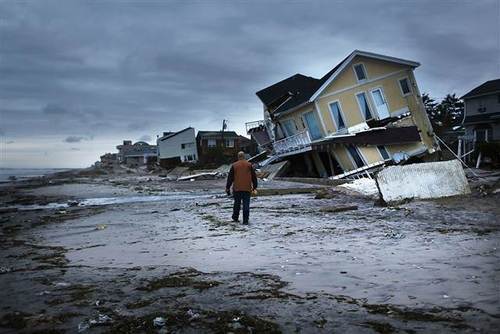New York City has only spent about half the federal funding ($14.7 billion) it received after Superstorm Sandy. A portion of the money was meant to repair infrastructure, help homeowners recover and implement large scale resiliency projects.Is the city ready for another superstorm?

With only a little more than half (54%) of $14.7 billion allocated in the wake of Superstorm Sandy spent, New York City is dangerously ill-prepared for the next superstorm, the city’s comptroller said in a report released Thursday.
New York City Comptroller Scott M. Stringer is calling on each level of the city’s government to “redouble efforts to ensure that federal dollars are put to work protecting our shores.” So far, only 54 percent of the allocations made following the storm that caused $70 billion in damage have been invested.
“The slow pace of investment leaves as much as $101.5 billion in property value, such as homes, hospitals and businesses, vulnerable to more frequent and more intense storms,” according to an analysis of property development within the City’s current floodplain.
“It’s not a question of whether New York will be hit by another superstorm like Sandy, but when. Yet six years after Sandy hit, we still haven’t fully recovered and many of the City’s homes, businesses, schools and hospitals remain dangerously exposed to the next storm. We have to do more, and we have to do it now,” said Stringer.
The report notes that the City has spent only 43.9 percent of $10.3 million allocated FEMA funds set aside to repair and improve crucial components of New York City’s public infrastructure. This includes 20 percent of allocated funds spent on the city’s health and hospitals.
Seventy-nine percent of the $4.2 million set aside to rebuild businesses and resiliency projects has been spent, the report notes.
Stringer offered a set of proposals aimed at preparing for future extreme weather events. These include speeding up the pace of spending on resiliency projects and implementing new strategies to protect all coastal communities.
“Safeguarding our shorefront is not a priority we can kick down the road – it’s an emergency,” Stringer said. “Lives are at stake, homes and businesses are on the line, and futures hang in the balance. We need to act with the urgency that our climate crisis demands because time is not on our side.”
When is the next Sandy going to happen? 6 months, 10 years, 201 years? We don’t know but you have to be prepared for any eventualities!











